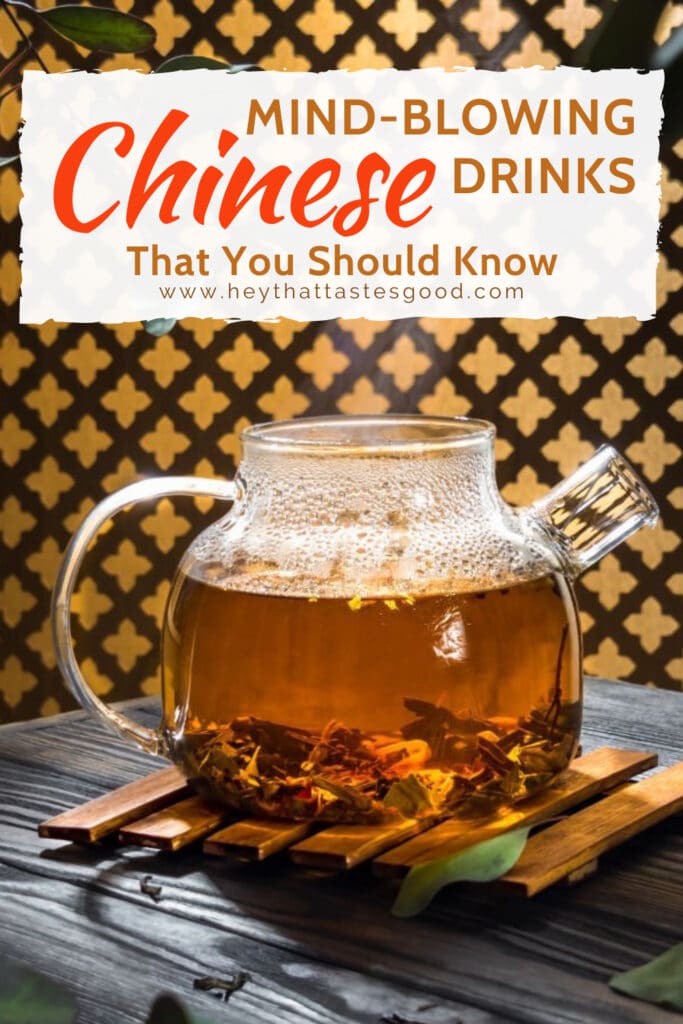Chinese drinks are an essential part of the larger Chinese cuisine. Unlike what people think, China has more than tea on its drink menu. In fact, once you get to know the culture a little better, a whole new selection will open up in front of your eyes.
If you prefer alcoholic drinks, China has multiple types of grain-based wine, from Baijiu to Huangjiu, and even iconic beer brands like Tsingtao. But for people who are opposed to the effect of wine, China also has soy milk and, of course, a wide variety of tea.
Without further ado, let me take you on a journey across the wonders of Chinese cuisine, particularly the beverage side of the country. After this, I’m sure you will plan a drinking trip to experience the entries below.
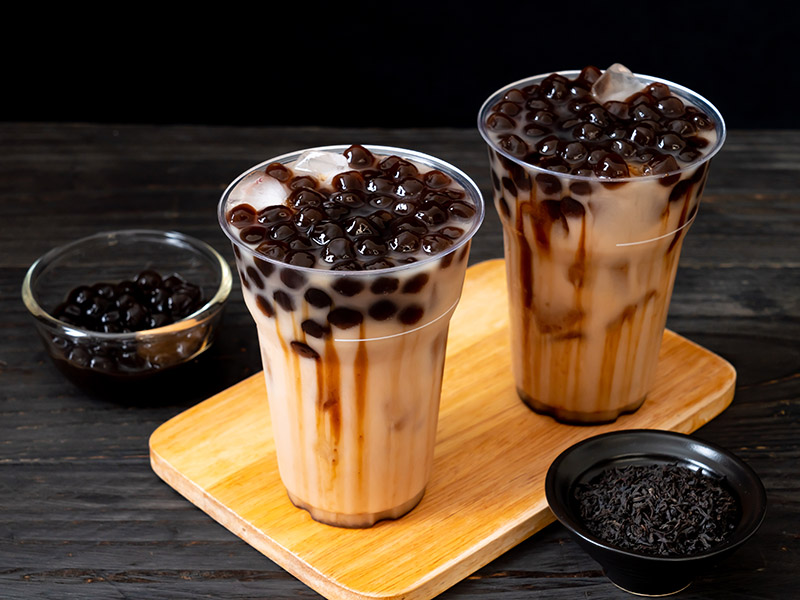
Chinese Teas Are Always Good For Relaxation
Tea has been part of Chinese culture since the dawn of time. People drink tea for almost every occasion, from breakfast to dinner, from a celebration to just an ordinary way. Thanks to this deep connection, China has created some of the best tea brands worldwide.
1. White Tea
Non-alcoholic
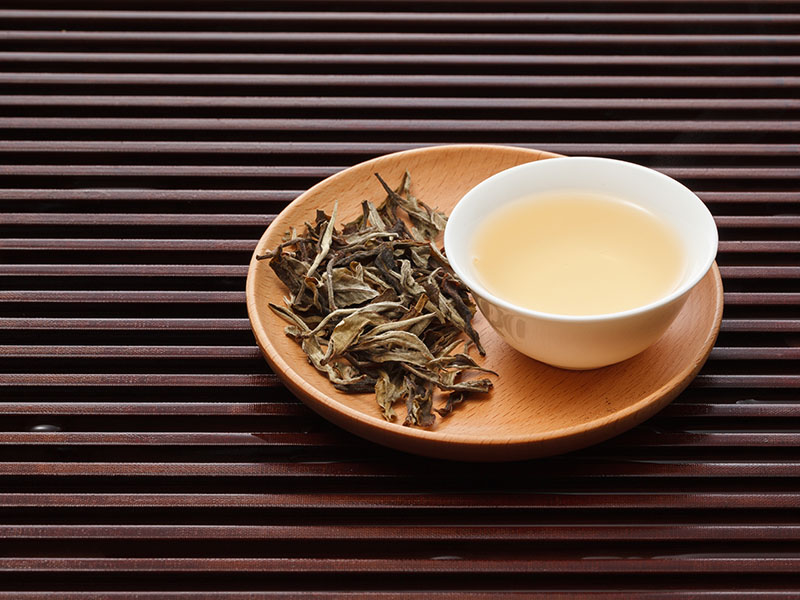
White tea is a term that describes a variant of tea in China with almost a colorless appearance. The leading producers of White tea are in Fujian province, where the mountainous and stable weather terrains are quite advantageous for planting herbs.
The history of White tea can go as far back as the Song dynasty (10th – 13th century A.D) when Emperor Huizong mentioned that this tea variant was his favorite.
Some of the most famous White tea variants include Silver Needles, White Peony, and Shou Mei (Longevity Eyebrow). After the harvesting, the producers usually dry the leaves out in the sun. You just have to use hot water to rehydrate the leaves to make the tea.
Most versions of White tea can benefit your health since they contain minerals such as potassium, calcium, and magnesium.
Where to buy: White tea nowadays is available across China. But if you want to experience the authentic taste of this type of tea, you should go to Fujian.
2. Black Tea
Non-alcoholic
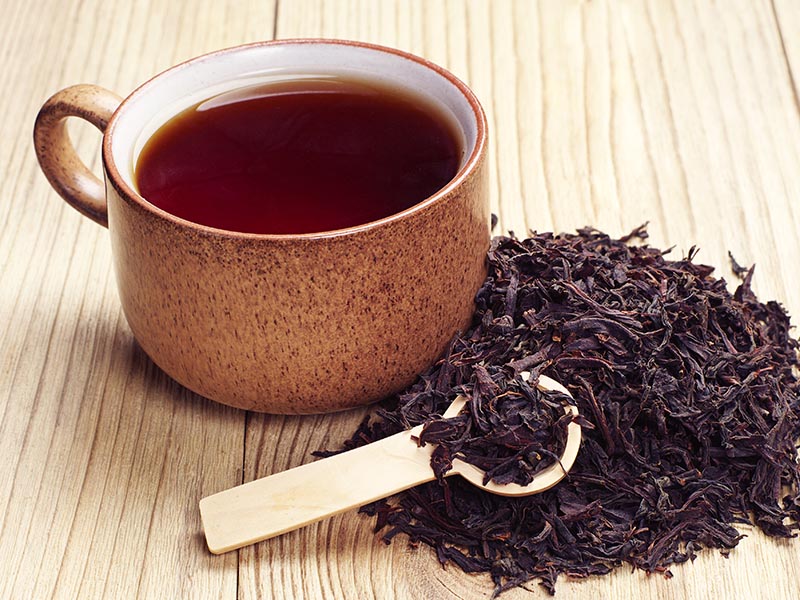
Chinese Black tea, also known as Red tea by mainland Chinese, is another iconic tea variant that you can find in China. Unlike White tea, the cultivation of Black tea is more widespread, with regions like Anhui, Yunnan, and Guangdong having their farms.
The origin of Black tea started around the 17th century in China. During that time, when British and Dutch merchants first saw these fantastic tea leaves, they immediately fell in love. The leaves could withstand long journeys, and they tasted pretty fabulous too.
Many people love Black tea because of the many health benefits that this Chinese tea has. With just one cup alone, your body can feel all sorts of nutrients rushing in, from vitamin C to vitamin B and even potassium.
Where to buy: Black tea has been a delicacy for centuries, which means you will see a lot of tea shops in China selling the tea in both dried and drink forms.
This video will show you how to differentiate Black tea from Green tea.
3. Oolong Tea
Non-alcoholic

What is the taste of tea at its best? Whatever flavor you desire, you can expect Oolong to have it and better. After all, this exotic Chinese tea is the result of an elaborate process. First, the oxidation process will cause the tea leaves to darken and dry up, fortifying the existing flavors.
You can feel the hint of flowery aroma wafting around your nose and the sweetness once the tea touches your tongue. There is a slightly bitter after-taste, but it makes the drinking experience much better.
The production method of this tea variant originated as far back as the Tang dynasty (7th – 10th century A.D). And during the 1700s, producers of the Anxi region of Fujian started improving the tea to become what Oolong is today.
Oolong tea, just like its other contemporaries, is full of nutrients for your body. There are vitamin C and E, as well as minerals like zinc. The drink also contains traces of caffeine to boost your energy. You can drink it plain or with various toppings like fruits or jelly.
Where to buy: Oolong is available in many tea shops around China.
4. Tieguanyin Tea
Non-alcoholic
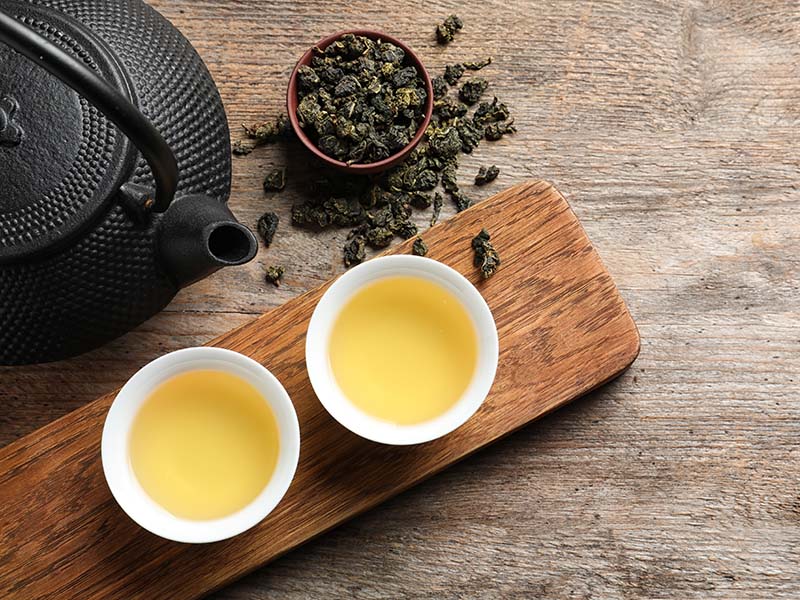
Tienguanyin is another type of Oolong tea you should buy the next time you visit China. The name of this beverage is a reference to the Goddess of Mercy, Guanyin, in the Buddhist tradition.
When it comes to the history of Tieguanyin Tea, there are two versions. In one legend, Guanyin appeared in the dream of a poor farmer called Wei and told him to harvest a plant inside a cave. In the end, the plant turned out to be Tieguanyin.
In another story, a scholar named Yang discovered the tea under the Guanyin rock. He later gifted the tea to Emperor Qianlong of the Qing dynasty (17th – 20th century A.D). The emperor was impressed, so he asked Yang for the name. The scholar decided to call the tea Tieguanyin.
Tieguanyin does not come in just one form because you can get different types based on the harvest season and drying level. For example, if you want something with a more potent fragrance, try spring Tieguanyin. For a milder taste, the autumn version is more suitable.
Where to buy: Tieguanyin is one of the most premium tea types worldwide. If you want to feel the true flavor of Tieguanyin, I’d suggest going to Anxi county of Fujian province.
This guide will tell you all about the production of Tieguanyin tea.
5. Chrysanthemum Tea
Non-alcoholic
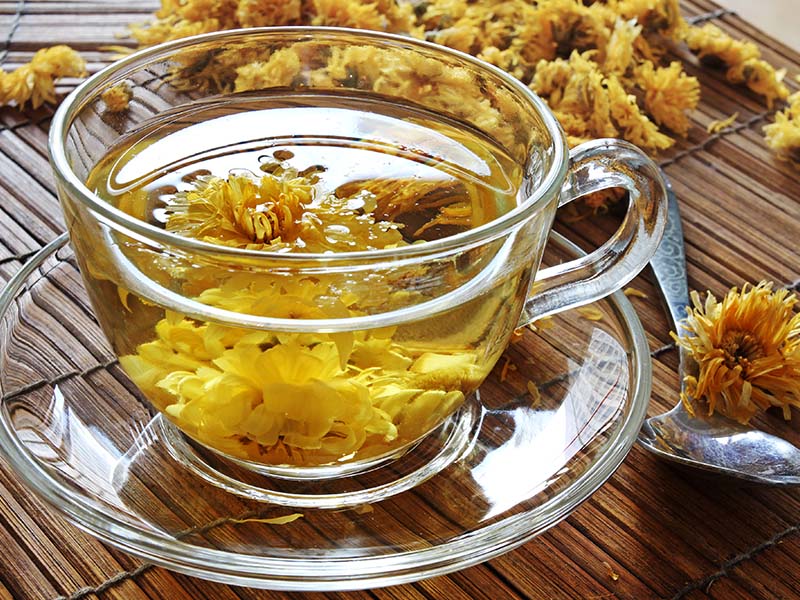
Chrysanthemum tea is a very vibrant-looking beverage. This type of tea didn’t arrive in the Chinese market until the Song dynasty (10th – 13th century A.D). But the harvesting of chrysanthemum as an herb started much earlier in 1,500 B.C.
While most tea types use dried leaves, Chrysanthemum tea utilizes flowers as the base. This tea has a yellow hue after being submerged in hot water. The tea also has a fragrant and floral aroma that’s irresistible.
And when you drink it, the experience is so much better since you can taste a slight sweetness and butteriness. The tea has a lot of positive health factors like preventing headaches, helping you digest better, and increasing your metabolism.
Where to buy: In China, you can find three Chrysanthemum tea varieties, two from the Anhui region and one from the Hangzhou region.
6. Pu Erh Tea
Non-alcoholic

Pu Erh tea is one of the oldest tea variants in China today. The history of Pu Erh dates back to the Han dynasty, specifically in the Yunnan region.
The appearance of Pu Erh is quite attractive. Instead of separating tea leaves, the leaves get compressed to form a round shape. Aside from making the tea much easier to boil, this shape also helps with transportation since it’s pretty compact.
Pu Erh has a very earthy and grassy aroma. The taste doesn’t just flow down with the liquid, but it lingers on your tongue. Due to its nature, the longer you store the tea, the better it will taste. I would suggest keeping the tea inside a clay jar in a cool and dry place.
Where to buy: Getting authentic Pu Erh tea can be daunting if you’re not in China. But if you manage to go to the country, you can get the tea in Yunnan province.
Pu Erh tea is one of the most unique tea variants in the world.
7. Wong Lo Kat Herbal Tea
Non-alcoholic
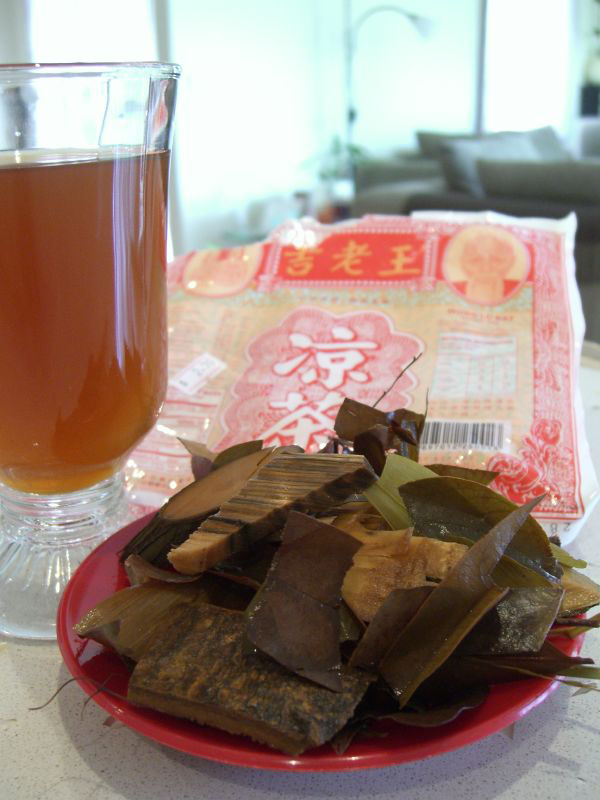
Wong Lo Kat is a Cantonese staple drink thanks to its healing nature.
Wong Lo Kat is a herbal tea brand in mainland China and Hong Kong. Dr. Wong Chat Bong created the drink brand during the Qing dynasty in the 19th century. However, after the Chinese Civil War in the 1950s, the original company members fled to Hong Kong.
If you look for Wong Lo Kat, you will find two types, including a canned version and a dried version. The dried version usually comes in a package of dried herbs like licorice, Chinese Mesona, and chrysanthemum.
This type of herbal tea is very refreshing to your body. The canned version can cool your body down during a hot summer day, while you can boil the dried version for the winter.
Where to buy: There are two types of Wong Lo Kat you. One version is available in many stores in mainland China while another version is Hong Kong-exclusive.
8. Hong Kong Milk Tea (Xiang Gang Nai Cha)
Non-alcoholic
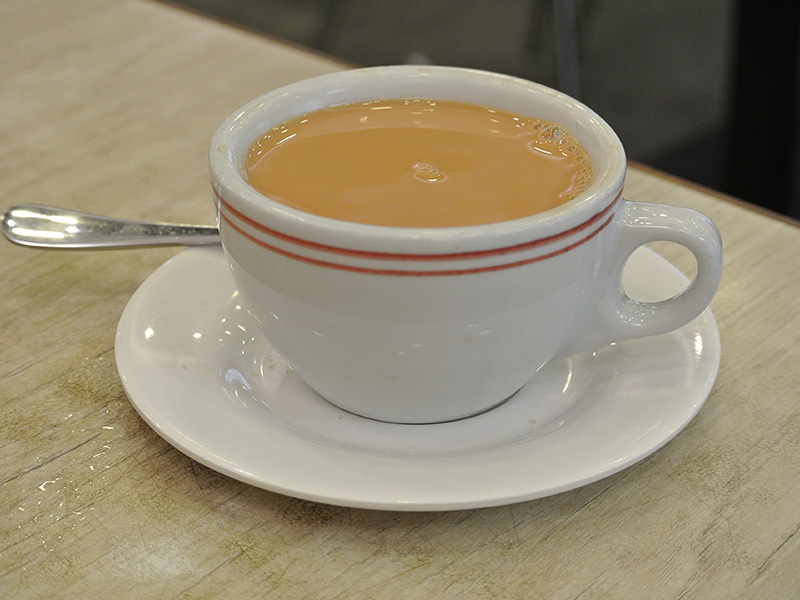
With the British Empire colonizing Hong Kong, many aspects of the British culture and lifestyle also influence this tiny region, including the habit of having tea in the afternoon. And that’s where the origin of Hong Kong milk tea comes from.
Like British tea, this Hong Kong version relies on a mix of milk and Black tea, but you can also use Pu Erh tea as one of the bases. The texture of Hong Kong milk tea is very brothy, and the taste is a mix of creamy sweet.
Nai Cha has become somewhat of a cultural icon for every Hong Konger. People love to drink this beverage every day since it’s a good source of protein. The most common way to sell Hong Kong-Style milk tea is through open-air street stalls called Dai Pai Dong.
Where to buy: The drink is trendy in Hong Kong. You can find countless stalls selling milk tea.
This video will show you what makes Hong Kong milk tea so good.
9. Brown Sugar Boba Milk Tea
Non-alcoholic
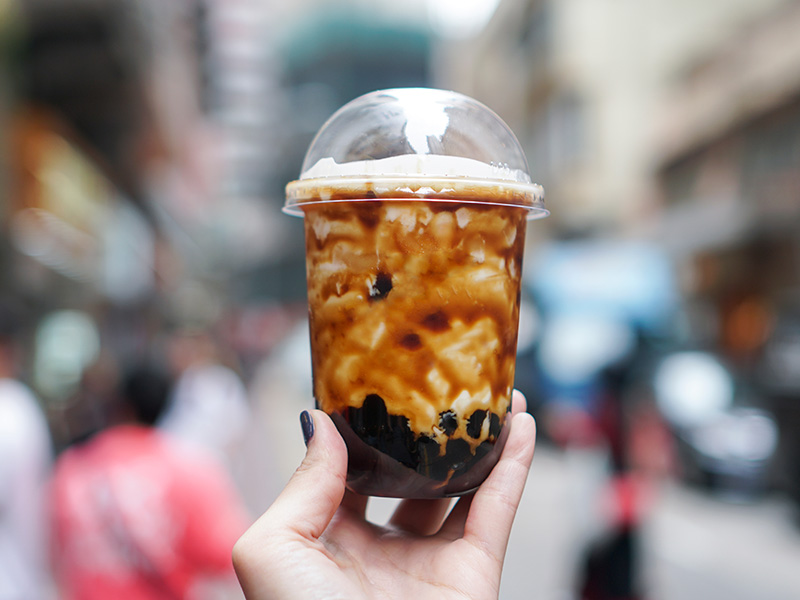
Brown Sugar Boba is a subcategory of Boba tea. Instead of diversifying the selection with various flavors, this beverage only has one version, and it’s probably one of the most popular drinks worldwide.
Although the drink started in Taiwan, the familiarity of taste soon helped this tea-based delicacy become popular in China. The main attraction here is the tapioca pearls or boba. These delightful balls can be pretty fun to eat due to their sponginess.
The tapioca balls usually have a unique brown sugar glaze to make them quite sweet. The final part, which makes this type of boba tea quite remarkable, is the combination of milk and tea. The cool herbal creaminess can wash away the heat.
From a simple origin, Boba Tea has evolved into a constant part of the youth culture. This beverage represents many social aspects, including appreciation as many young people often buy Boba Tea as a way to thank others.
Where to buy: There are multiple cafes in China selling this popular beverage; you would not have difficulty finding one.
Get Your Blood Pumping With These Wine Options
China has known how to make alcoholic drinks since the early beginning of its civilization. Due to the early creation of the distillation method as far back as the Han dynasty, the wine category in China is very numerous, with many different products.
10. Sweet Rice Wine (Jiu Niang)
Alcoholic

Jiu Niang, or Chinese Sweet Rice Wine, is a mix between a dessert and a soupy beverage. To an average Chinese person, Jiuniang is an essential part of the Chinese Winter Solstice Festival (Dongzhi), alongside a type of sticky rice ball called Tang Yuan.
To make Jiuniang, the producer uses a starter (Jiuqu), which will facilitate the fermentation process, to mix with the sticky rice. The rice will slowly ferment until the alcohol level reaches 1.5-2%.
Due to the fermentation, the acidity also increases, making the sticky rice quite sour. However, the acid also breaks down the sugar enzyme within the starch to create a slight bit of sweetness.
Where to buy: You can find Jiuniang these days in plastic packages in China, as well as from street vendors during the Dongzhi Festival.
11. Yellow Wine (Huangjiu)
Alcoholic
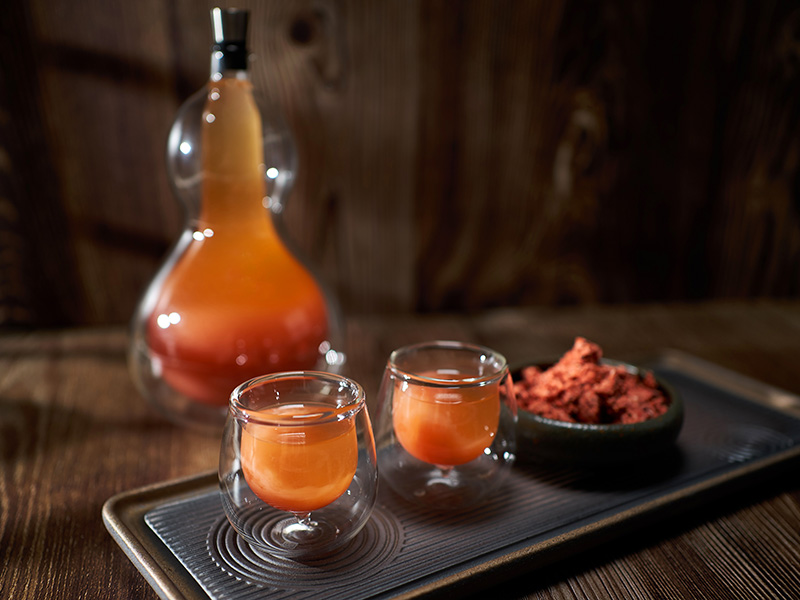
Huangjiu is the collective name for a wine that comes from rice, sticky rice, and millet. Due to its yellow hue, the Chinese decided to name it “Yellow Wine”. The alcoholic drink is very influential in the entire Chinese society, similar to beer in most western nations.
Huangjiu has many different sub-categories based on the flavor and the fermentation method. If you prefer a sweeter variant that does not burn your throat, you can try a type called Feng Gang Jiu. However, the more experienced drinkers can try Yuanhongjiu, which is very dry.
The ingredients to make Huangjiu always revolve around three things: Water, rice, and Qu. Qu is a starter that the producer puts in to help the rice ferment and release all of that enzyme. The final product usually has an alcoholic level of around 8-20%.
Where to buy: Huangjiu is relatively easy to buy nowadays because it’s one of the more popular types of alcohol in China.
12. Shaoxing Wine
Alcoholic

If you’re a fan of the Chinese way of cooking, you might have heard of Shaoxing wine. This type of wine is part of the Huangjiu family I mentioned above.
People would often mistake Shaoxing for cooking wine, but in reality, it’s not. The cooking version is called Liaojiu, and the liquid gets infused with herbs and spices. On the other hand, pure Shaoxing wine is suitable for drinking.
The home of Shaoxing wine is in the Zhejiang province of China. The main ingredients are glutinous rice, water, and starter yeast. Without glutinous rice, the producer can use other types of grain like sorghum and millet.
Where to buy: If you want to buy Shaoxing for drinking, you can find the drink in a lot of liquor stores in China. But if you want to buy the cooking version, which is Liaojiu, the supermarket is the easiest place to find it.
Through this video, you can understand why Shaoxing wine is used in Chinese cooking.
13. Chinese Grain Wine (Baijiu)
Alcoholic
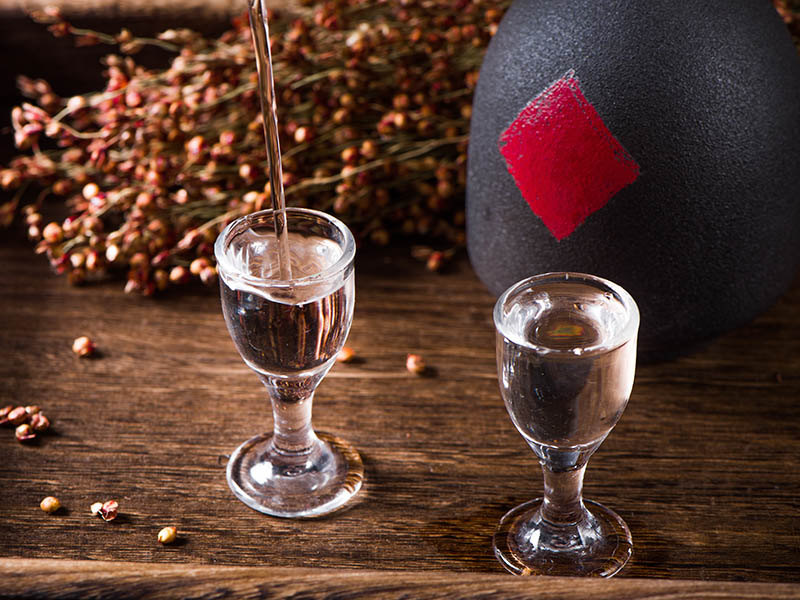
Baijiu is one of the premier grain-based wines in the Chinese market. The base of this beverage contains wheat, barley, or millet. Around Asia, Mijiu is very similar to Korean Soju and Japanese Shochu, with an alcohol level of around 35-60%.
China has had a very long history with wine. The first archeological evidence showed that ancient Chinese already knew how to brew alcoholic drinks even before establishing Chinese dynastic rule. However, the origin of Baijiu is quite unclear at this point.
Like most modern wines, the best way to enjoy Baijiu is to drink it at room temperature. The more you feel the zing, the better the wine gets. However, that sensation will quickly settle down to a more familiar dryness when it gets to the end of your taste buds.
Where to buy: Similar to Huangjiu, Baijiu is really popular across China so you can just find the beverage in many liquor stores in the country.
You can learn the history of Baijiu in this video.
14. Osmanthus/Cassia Wine (Gui Hua Jiu)
Alcoholic
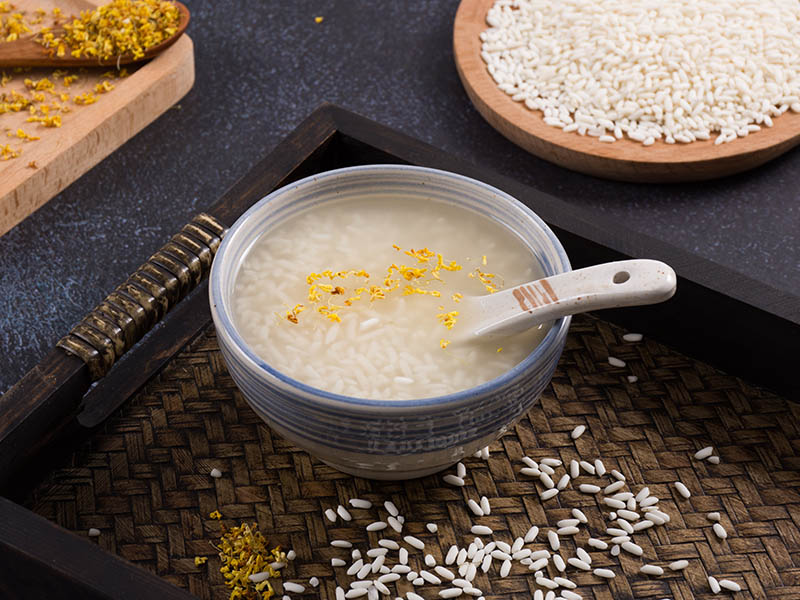
Osmanthus, or Cassia wine, is a unique wine in China due to its ingredients. Aside from the usual rice wine as a base, the product adds osmanthus flowers to give the beverage a yellow hue and a pleasant floral and peachy hint.
Cassia wine has many functions in Chinese society. First, it’s a celebratory drink during the Mid-Autumn Festival. The second function is to act as a medicinal drink.
You can also prepare Cassia wine as a birthday gift since the Chinese word for wine (jiu) is similar to the word long (jiu), which can mean “I hope you will live for a long time”.
Where to buy: Since there are several local producers of this type of wine across China, you won’t have any trouble finding it whenever you visit the country.
15. Lychee Wine (Li Zhi Jiu)
Alcoholic

Li Zhi Jiu is a specialty that uses lychee, a sought-after type of fruit in China. This beverage is perfect during or after a meal since its sweetness goes nicely with savory food.
Although the exact time and date are still very murky, some people believe that Li Zhi Jiu has existed since the Tang dynasty of China.
Appearance-wise, Lychee Wine looks quite delicious thanks to its reddish hue, which might entice many people. In most cases, the flavor leans on the sweet side, but you can also find dryer versions of the delicacy. Typically, this type of wine has an alcohol level of 10-18%.
Where to buy: Lychee Wine is an underrated delicacy since Guangdong is the only province that produces the beverage. You can get your Lychee Wine fix there.
Chinese Beers Make The Trip More Exciting
Not just wine but beer also has quite a vibrant history in China. Before ancient Chinese people knew how to make wine, they created beer as their preferred alcoholic drink. However, the method soon fell into obscurity for millennia until the Germans reintroduced the country to beer.
16. Tsingtao Beer
Alcoholic
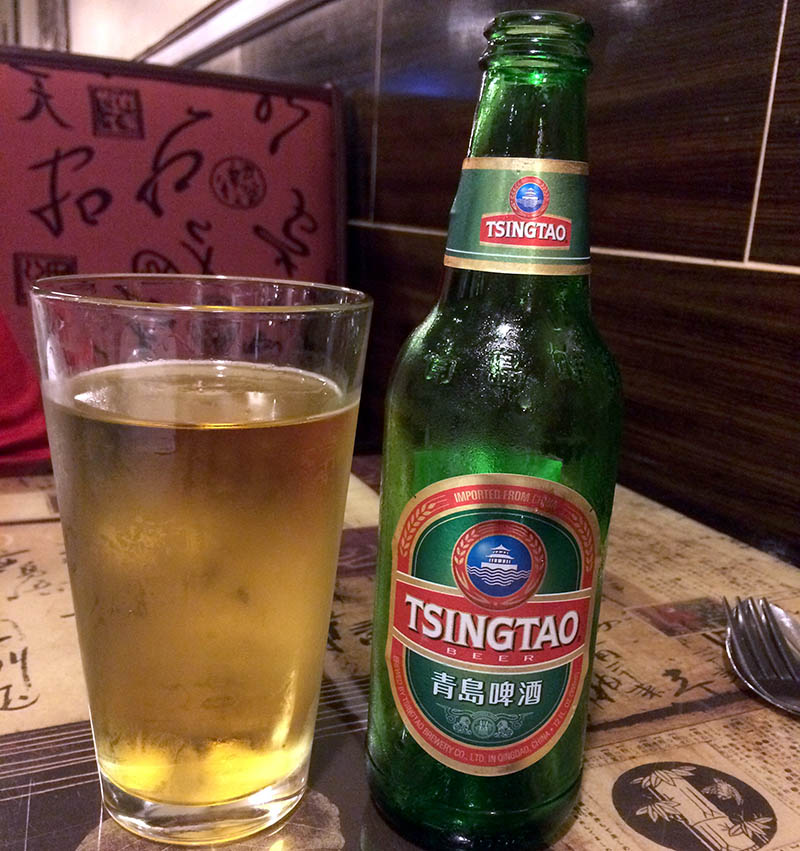
One of the most popular Chinese beer brands worldwide is Tsingtao beer.
As I said, the arrival of the Germans kickstarted the love of beer for many Chinese people. And the place the Germans decided to set up a brewery was a little city called Tsingtao, or Qingdao. Alongside the British, the German founders created the Tsingtao Brewery.
According to what the company advertises, Tsingtao beer includes water from the Laoshan spring, essential to Chinese culture due to its affiliation with Taoism.
Tsingtao is a pale lager, which means the color is more on the lighter yellow side. The flavor is somewhat dry, but it still has a mild bitterness. The texture is smooth, but the frothiness brings an interesting after-taste to the beer.
Where to buy: As one of the most popular beer brands in China, Tsingtao beer is available in many supermarkets in the country.
Tsingtao and beer are almost inseparable at this point.
17. Harbin Beer
Alcoholic
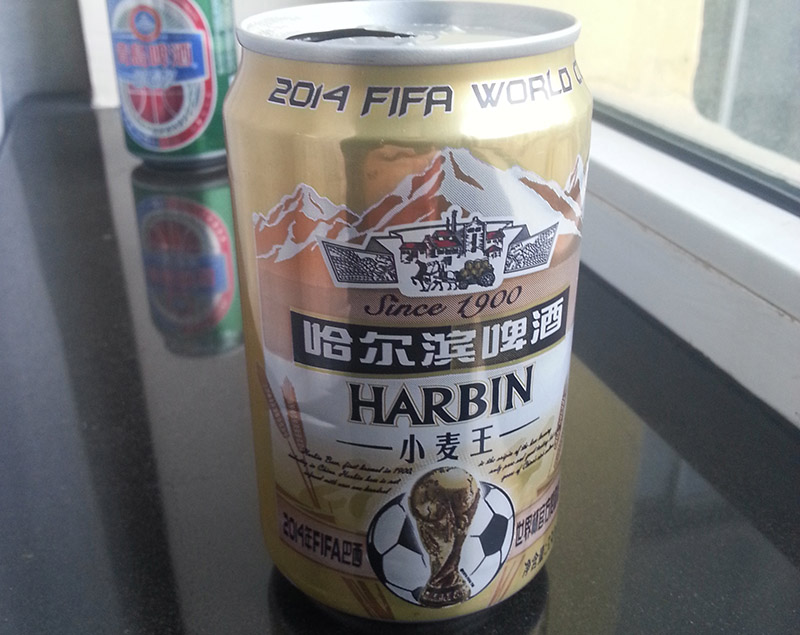
When you visit the city of Harbin, you have to try its Harbin beer.
Aside from Tsingtao, China is also home to another famous brewer called Harbin Brewery. The headquarter of the brand is at the northeastern tip of China, particularly in the province of Heilongjiang.
The creation of Harbin beer took place at the start of the 20th century. The brand is currently one of the oldest and biggest beer brands in China.
The original creator of this type of beer is also not Chinese but a Pole from the old Russian Empire. Harbin beer is a pale lager with an alcoholic level of around 4.8%. This beer is relatively mild compared to its other Chinese counterparts.
Where to buy: Compared to Tsingtao, Harbin is not popular outside of China. But you can still find the beer at various stores in the Heilongjiang province.
18. Snow Beer
Alcoholic
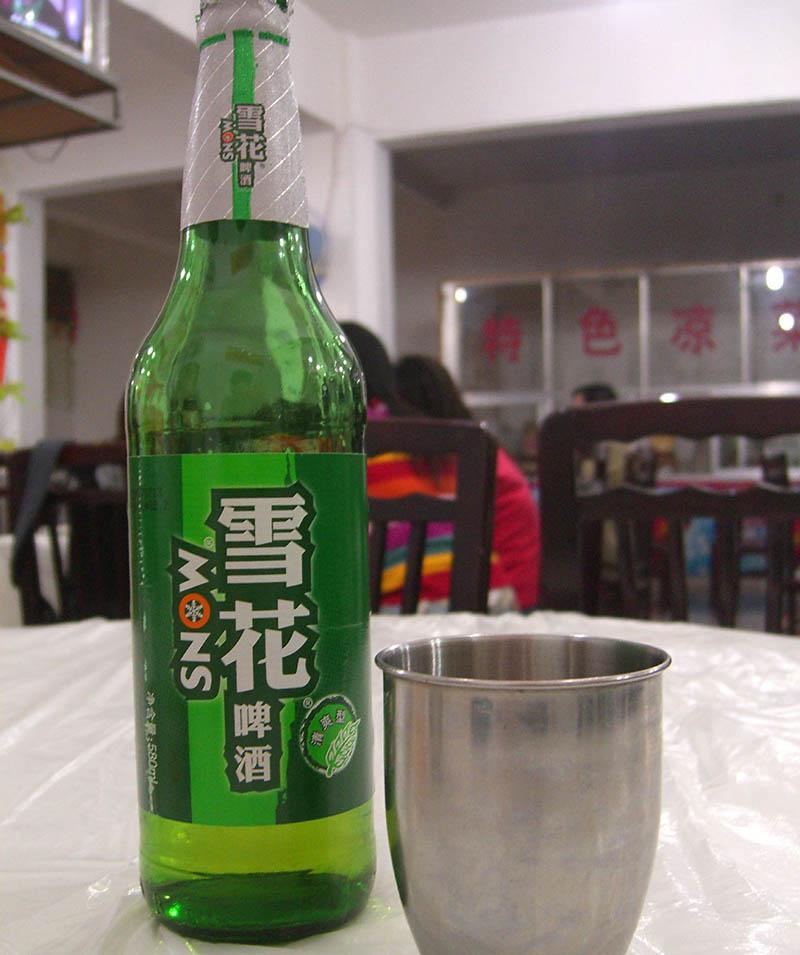
Snow Beer is a brand of lager from Shenyang.
Snow Beer is a product of Shenyang, a city located in northeast China. The creation of Snow Beer took place in 1934 by a Japanese company called Dai Nippon Beef. The original name for the brand was Manchuria Beer.
In 1949, the brand changed its name to Shenyang Beer Company and then Snow Beer in 1957. Snow Beer is pretty underrated compared to its competitors like Tsingtao or Harbin worldwide, but the brand is actually the most popular in China.
The malty flavor is quite pleasant, and the bitterness is not too overwhelming. Since the 2010s, Snow Beer has become part of the AB-InBev family, selling Budweiser in China.
Where to buy: Snow Beer is pretty hard to find outside of China. But the beverage is quite popular in the country as Snow Beer’s one of the best-selling brands.
Enjoy Other Simple Family-Oriented Drinks In China
These are some of the most common family-oriented drinks you will see on the street of China. They are pretty popular with people of various age groups, from kids to teenagers and even adults. These might be the best choices if you’re traveling with family members.
19. Soy Milk (Dou Nai)
Non-alcoholic
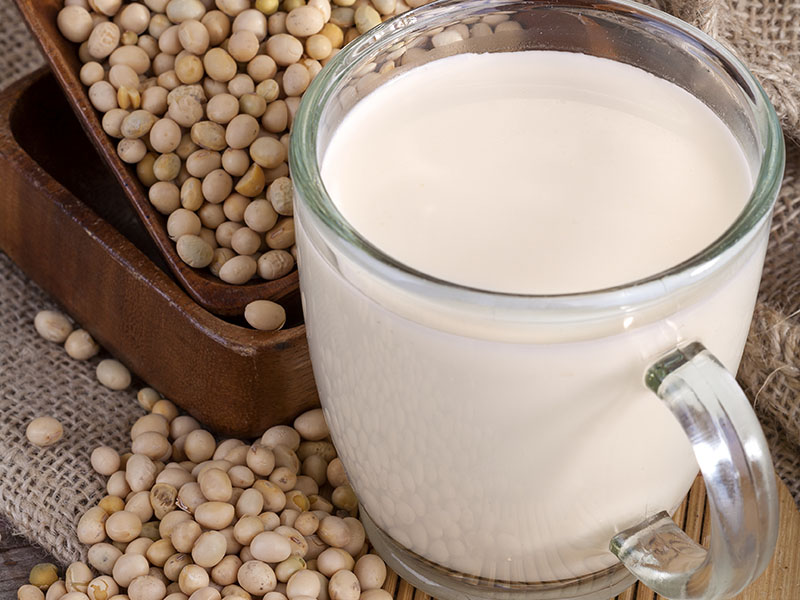
The most well-known drink option when you come to China is Dou Nai or Soy Milk. According to archeological findings, ancient Chinese knew how to extract the liquid from soybeans as far back as the Han dynasty (3rd century B.C – 3rd century A.D).
There are two types of soy-based beverages. The first one is this entry right here, Dou Nai, which contains a mix of dairy and soy liquid. On the other hand, the second type, called Doujiang, is more concentrated in beanie flavor.
You can start the milking process by soaking the soybeans in water. This process will facilitate the extraction of flavors. The soaking also makes it easier for people to grind the beans. The final step is to boil the liquid until it reduces in volume.
Where to buy: Soy Milk is available in almost every Chinese province. You can find a lot of street carts selling the drink.
20. Yunnan Coffee
Non-alcoholic
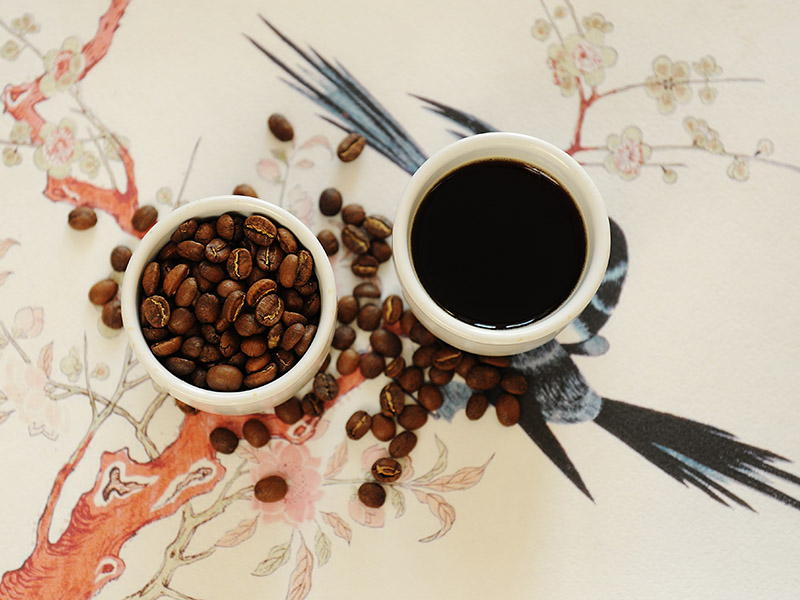
The coffee culture in China started in a province known as Yunnan. During the late 19th century, a Christian missionary brought the plant from France to China, hoping to introduce the country to the western-styled drink.
And surprisingly, the plan works rather well when the consumption of coffee in China has been rising steadily, almost rivaling tea. And there is no better version for you to fully experience the wonder of Chinese coffee than the Yunnan variant.
The taste of Yunnan coffee beans is akin to that of a slightly toasted and sour dark chocolate. The acidity within each bean can be pretty significant, but a sweet undercurrent brings a very fragrant nuttiness to the drink.
Where to buy: Yunnan is a significant coffee supplier of major brands across China. You’re likely drinking Yunnan-originated beans if you drink at any big coffee shop.
Yunnan region is quite vibrant with its own coffee drink.
21. Sour Plum Drink (Suanmeitang)
Non-alcoholic
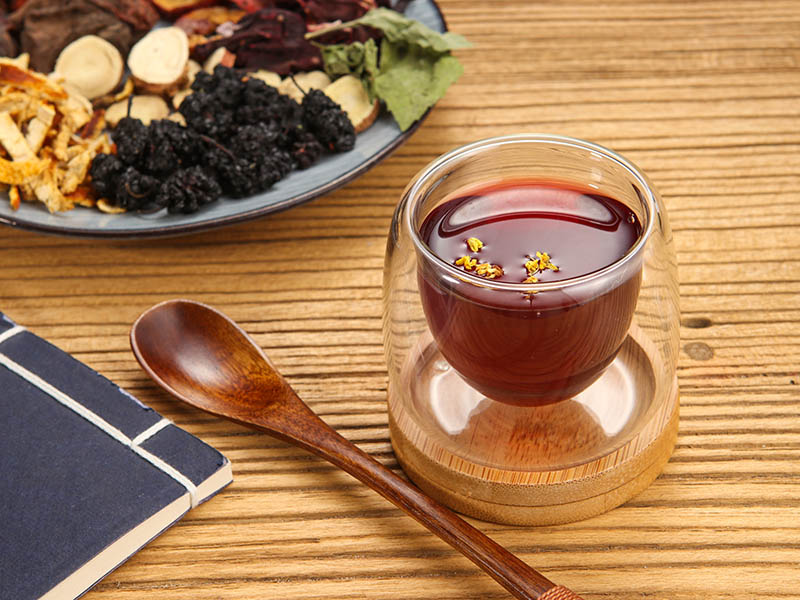
Suanmeitang can raise a few eyebrows since its ingredients are unusual if you compare it to other drinks. The list includes rock sugar, smoked plums, and sweet osmanthus. However, I can assure you that the blend of flavors works rather well.
The history of Suanmeitang started during the Song dynasty, but the current variant came from a recipe recommended by Emperor Qianlong of the Qing dynasty.
With the inclusion of primarily healthy components, drinking Suanmeitang will help you improve your digestive system. Suanmeitangg comes in a glass bottle or a tall can in China.
Where to buy: The drink is available in many Chinese supermarkets.
Recipes To Help You Recreate The Following Drinks
If you want to recreate those Chinese drinks at home, let me show you two simple recipes that are pretty popular. One option is the hip and trendy Boba milk tea, while the other option is a more chill Hong Kong milk tea for a relaxing afternoon.
Brown Sugar Boba Milk Tea
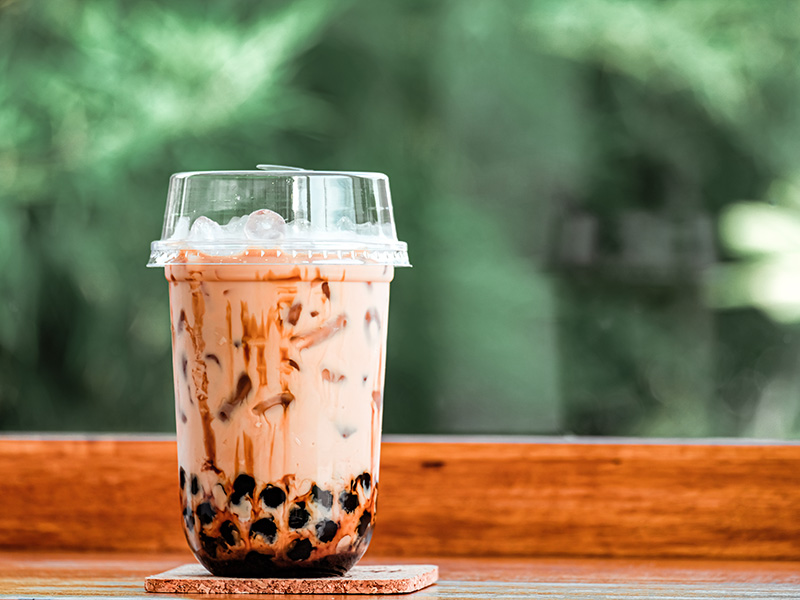
Brown Sugar Boba milk tea has been taking over the world recently. The drink exudes youthfulness that clicks immediately with both Millennials and Gen Z.
Ingredients: Tapioca starch, brown sugar, water, milk, tea, and ice.
Step 1: Combine starch, brown sugar, and water on a stove to create tapioca dough.
Step 2: Roll the dough with a starch coating and cut the dough into small pearl-sized pieces.
Step 3: Cook the pearls until they become gelatinous.
Step 4: Melt brown sugar in a saucepan and mix in the boba pearls.
Step 5: Boil the tea, add milk and boba with sugar glaze to finish up the drink.
Hong Kong Milk Tea
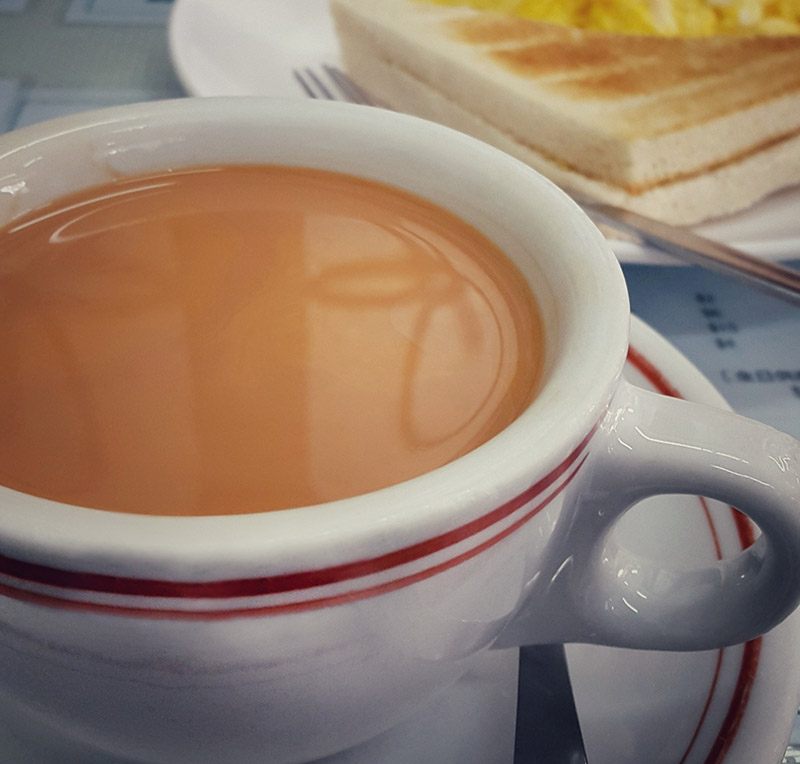
Hong Kong milk tea is a hot drink that lets you enjoy the current moment of your life. The sweetness from the condensed milk blends nicely with the herbal nature of the Black tea.
Ingredients: Black tea, water, and condensed milk.
Step 1: Boil the water with Black tea in a saucepan.
Step 2: Reduce the heat and slowly pour the condensed milk into the pan.
Step 3: Let the mixture simmer for a few minutes.
Step 4: Pour the milk tea into a glass through a strainer.
This recipe shows a much clearer way of making Hong Kong milk tea.
Quenching Your Thirst The Chinese Way
One of the most critical aspects of Chinese culture is the emphasis on balance. This concept holds for the Chinese culinary world. When you have an abundance of food, you must equally experience a similar number of drinks.
As you can see from the list above, there are so many options for Chinese drinks, so you won’t have a hard time choosing one when you visit China. Or, if you still want to drink them without visiting China, there are still Chinese stores selling the beverages.
Thank you for tuning once again to another article of mine. Comment below if you have a new drink to add to this list. If not, you can show some appreciation by liking and sharing this post on your social media. Stay full, and stay healthy; I’ll see you again!
